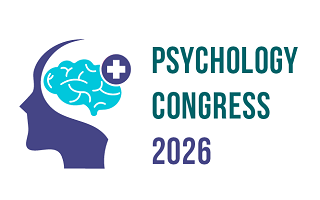3rd International Congress on
Psychology & Behavioral Sciences
March 26-27, 2026 | Osaka, Japan
Address: 1 Chome-9-15 Shinkitano, Yodogawa Ward, Osaka, 532-0025, Japan.
Psychology Congress 2026

University of Greenwich, UK
Abstract:
Loneliness among young people has reached alarming levels, exacerbated by the COVID-19 pandemic, and is closely linked to mental health challenges such as anxiety and depression. Third spaces—public, accessible areas where individuals can engage socially outside of home or work/school—offer potential solutions for alleviating this isolation. Despite growing evidence of their benefits for community engagement and mental health, there is limited research on how these spaces impact youth loneliness. This paper explores the importance of third spaces in combating loneliness among young people, focusing on community programmes as key examples of such spaces. It examines the barriers preventing youth from utilising these spaces, including logistical challenges, social stigma, and a lack of relevance to certain groups. By identifying these barriers and addressing the needs of young people, the paper argues that third spaces can play a critical role in fostering connection, improving mental health, and ultimately reducing loneliness in youth.
Background and Rationale
Loneliness, often referred to as the “silent disease,” has become increasingly prevalent among young people, particularly in the aftermath of the COVID-19 pandemic. The crisis acted as a catalyst, intensifying existing feelings of isolation and fuelling mental health challenges such as anxiety and depression (Buecker & Horstmann, 2022; Ernst et al., 2022). For many, this loneliness has led to decreased life satisfaction and the onset of depressive symptoms (Al Omari et al., 2023; Benke et al., 2023). In response, the need to rebuild social connections has become urgent. Third spaces—public, accessible places where individuals can interact outside of home or school/work—offer one promising avenue. These settings are associated with a greater sense of belonging and enhanced well-being (Oldenburg, 1989; Jones et al., 2013). While their value for adult mental health is increasingly recognised (Masi et al., 2011), little research has examined their specific relevance for youth. This paper explores the potential of third spaces, particularly community programmes, in addressing youth loneliness and mental health. Modern social life is shaped by urbanisation, changing routines, and rising living costs—all of which contribute to the decline of integrated social spaces (Singh, Noor & Ma’rof, 2024). Even when third spaces exist, they are often underused by young people, either because they are inaccessible or fail to resonate with their needs. Barriers such as limited operating hours, financial costs, lack of cultural relevance, and stigma continue to exclude many from engaging (Alam et al., 2023; Coatsworth et al., 2006).
Exploring Barriers to Utilisation of Third Spaces
Despite their potential, third spaces remain underutilised due to a combination of practical, social, and psychological barriers. These include inconvenient scheduling, travel difficulties, perceived or actual costs, and feelings of exclusion or discomfort in unfamiliar or poorly tailored environments. Some groups, especially marginalised or neurodiverse youth, may not see themselves reflected in the programming or culture of these spaces. Gaining insight into these barriers—from the perspectives of young people themselves as well as parents, educators, and community workers—is essential for designing more inclusive, appealing, and supportive environments. To unlock the full potential of third spaces, we must go beyond simply increasing their number. We need to adapt them to the realities of youth life today—whether by making programmes more culturally relevant, extending hours, offering financial support, or involving young people in co-design. By actively addressing the obstacles that deter engagement, we can better support young people in building the social connections they need to thrive.
Conclusion
There is a pressing need to better understand how third spaces can reduce youth loneliness and improve mental health. By identifying and overcoming the barriers that limit access and relevance, we can create spaces where young people feel they truly belong. These spaces not only offer support and connection but can become vital tools in addressing the growing mental health crisis. Ultimately, this paper calls for renewed attention from policymakers, educators, and urban planners to invest in inclusive, meaningful third spaces—not just for young people, but for the long-term health of our communities.
Biography:
Myra Maliha is a postgraduate student in Child & Adolescent Psychology at the University of Greenwich, London, UK. She focuses on youth mental health, trauma-informed care, and inclusive education, and has interned with Body & Soul Charity. Myra is passionate about improving mental health services and promoting social innovation.
